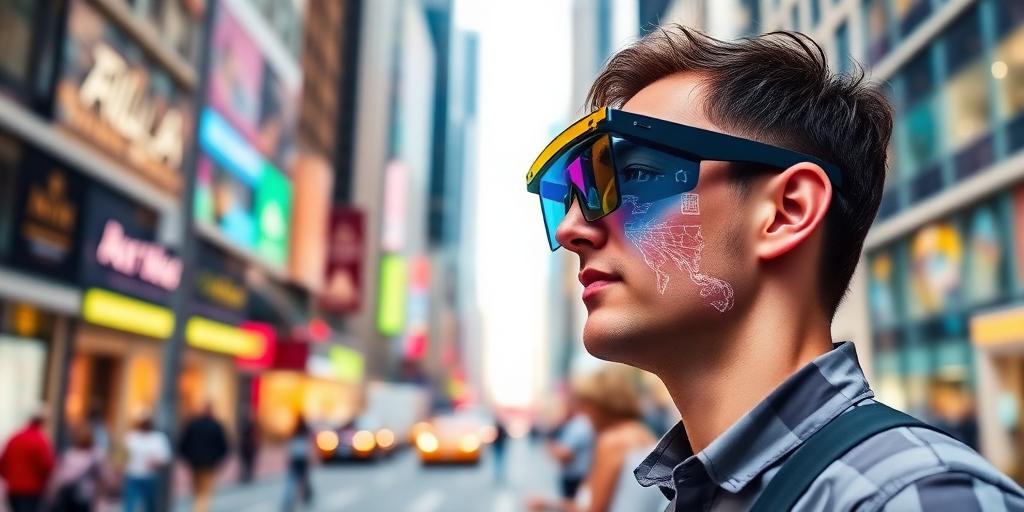The Blurring Lines Between Physical and Digital Life (2025)
As we move further into the 2020s, the integration of the physical and digital worlds is no longer a futuristic concept, but a present reality. This article explores the key trends and technologies driving this convergence, examining its impact on various aspects of life, from work and education to social interactions and entertainment.
Key Trends Shaping the Convergence
Several technological advancements are contributing to the blurring lines between our physical and digital existences:
- Augmented Reality (AR) and Virtual Reality (VR): AR overlays digital information onto the real world, while VR creates immersive digital environments. Both technologies are finding applications in training, education, retail, and entertainment.
- Internet of Things (IoT): The proliferation of connected devices, from smart home appliances to wearable sensors, generates vast amounts of data and enables seamless interaction between the physical and digital realms.
- 5G and Enhanced Connectivity: Faster and more reliable internet connectivity facilitates real-time data transfer and enables more sophisticated applications of AR, VR, and IoT.
- Artificial Intelligence (AI) and Machine Learning (ML): AI algorithms analyze data from connected devices to personalize experiences, automate tasks, and provide intelligent insights.
- Digital Twins: Digital twins are virtual representations of physical objects or systems, allowing for real-time monitoring, simulation, and optimization.
Impact on Work and Education
The convergence of physical and digital life is transforming how we work and learn:
- Remote Collaboration: Tools like video conferencing, virtual whiteboards, and collaborative project management platforms enable distributed teams to work together effectively.
- Virtual Training and Simulations: VR and AR simulations provide immersive and interactive training experiences for various industries, from healthcare to manufacturing.
- Personalized Learning: AI-powered learning platforms adapt to individual learning styles and provide customized content and feedback.
- The Metaverse in Education: The metaverse offers new opportunities for immersive learning experiences, virtual field trips, and collaborative projects.
Social Interactions and Entertainment
The way we socialize and entertain ourselves is also evolving:
- Social Media and Online Communities: Social media platforms continue to connect people across geographical boundaries, enabling real-time communication and information sharing.
- Virtual Events and Concerts: Live streaming and VR technologies allow people to attend concerts, conferences, and other events from the comfort of their homes.
- Gaming and Esports: The gaming industry is blurring the lines between the physical and digital worlds with AR games, VR experiences, and competitive esports tournaments.
- Digital Art and NFTs: Non-fungible tokens (NFTs) are revolutionizing the art world, allowing artists to create and sell digital artwork and collectibles.
Challenges and Considerations
While the convergence of physical and digital life offers numerous benefits, it also presents several challenges:
- Privacy and Security: The increasing amount of data generated by connected devices raises concerns about privacy and security.
- Digital Divide: Unequal access to technology and internet connectivity can exacerbate social and economic inequalities.
- Mental Health and Well-being: Excessive screen time and social media use can negatively impact mental health and well-being.
- Ethical Considerations: AI-powered systems raise ethical questions about bias, fairness, and accountability.
The Future of Convergence
Looking ahead, the lines between the physical and digital worlds will continue to blur. We can expect to see:
- More sophisticated AR and VR applications that seamlessly blend digital information into our physical environment.
- Increased use of AI and ML to personalize experiences and automate tasks.
- Greater integration of digital technologies into our homes, workplaces, and public spaces.
- New forms of social interaction and entertainment that leverage the power of virtual and augmented reality.
In conclusion, the convergence of physical and digital life is transforming society in profound ways. By understanding the key trends, opportunities, and challenges, we can harness the power of technology to create a more connected, efficient, and fulfilling future.
